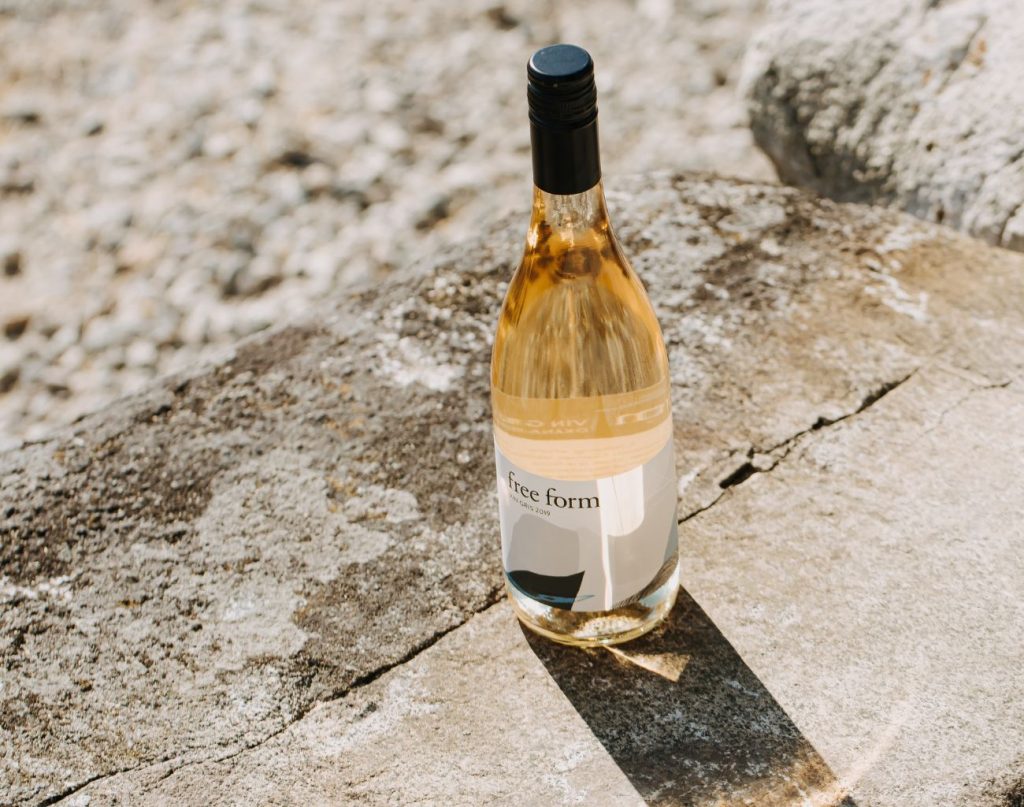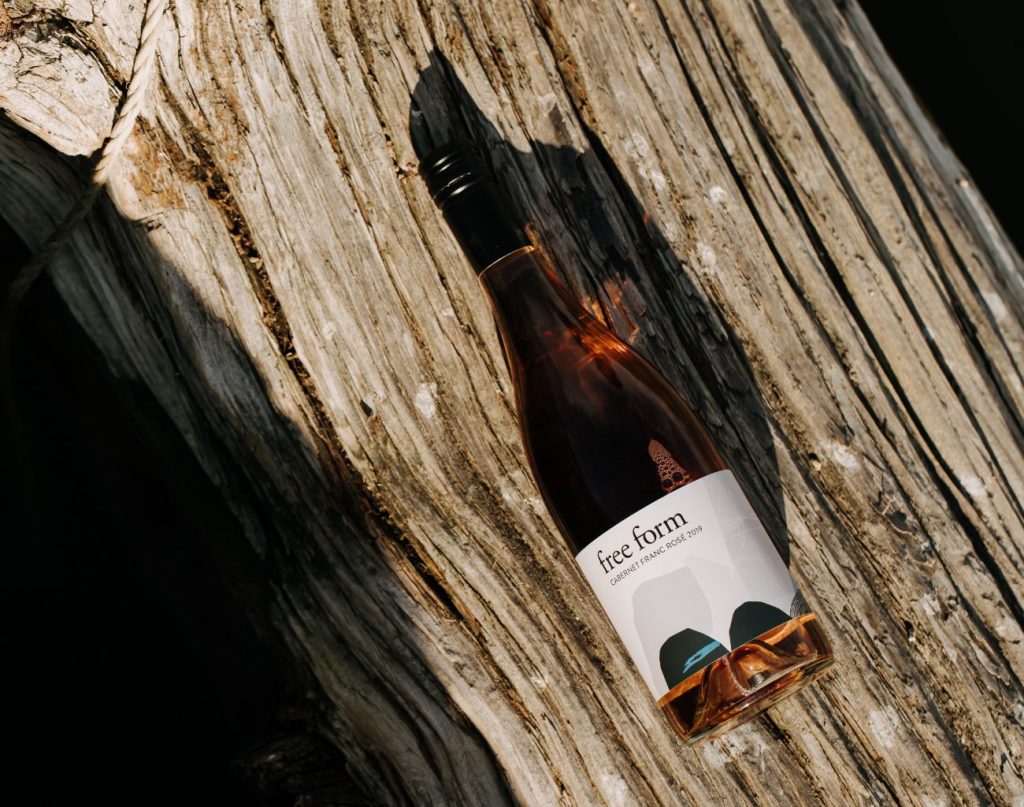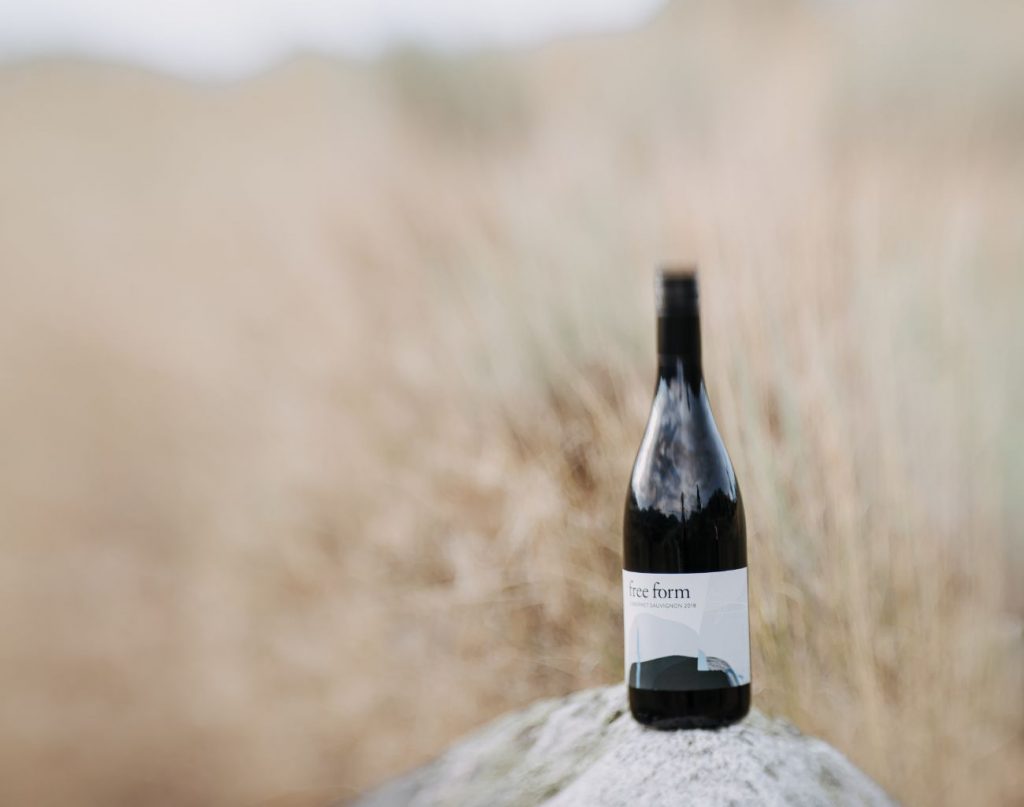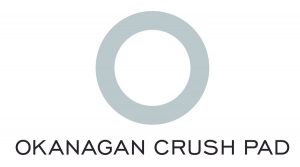Embracing the Art of Low-Intervention Winemaking:
The Philosophy Behind Free Form Wines
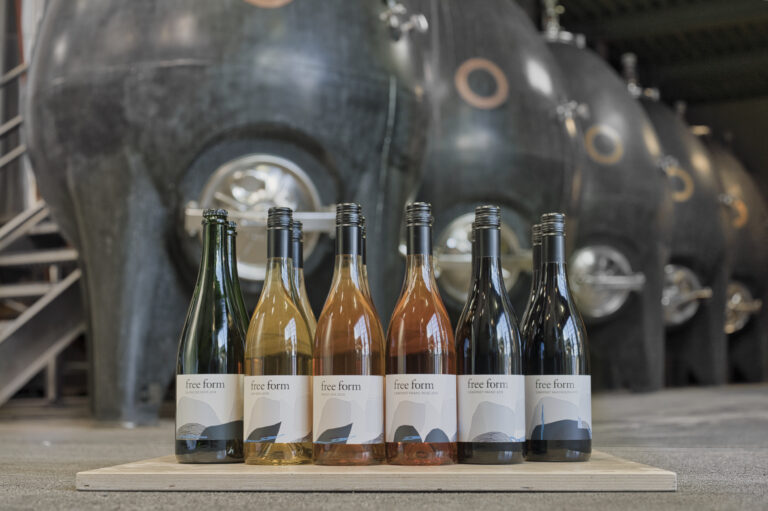
At the heart of the Okanagan Valley, Free Form wines represent a revolutionary approach to winemaking that honors nature and the unique terroir of the region. Born out of a desire to create wines that are true expressions of their environment, Free Form eschews conventional methods in favor of low-intervention practices that allow the land, the grapes, and the natural processes to guide the final product.
A Commitment to Organic Farming
The journey towards Free Form began with a deep reflection on vineyard practices at the Okanagan Crush Pad Winery. A commitment to organic farming was the first step, ensuring that the land would be preserved for future generations. This shift marked the beginning of a new winemaking philosophy, one that prioritizes respect for nature and the unique characteristics of the Okanagan terroir.
Free Form wines are crafted exclusively from grapes grown at the 320-acre Garnet Valley Ranch, a site that is not only certified organic but also meticulously designed to integrate with the surrounding natural landscape. The vineyard blocks are separated by wildlife corridors, and a restored stream has brought new life to the area, making it a haven for local fauna. This thoughtful approach to farming ensures that every bottle of Free Form wine is as much a product of the vineyard’s ecosystem as it is of the winemaker’s hand.
The Essence of Low-Intervention Winemaking
Low-intervention winemaking is more than just a trend—it’s a return to the roots of winemaking, where nature plays the leading role. Unlike conventional winemaking, which often relies on modern technologies and a range of additives to control the fermentation process and stabilize the wine, low-intervention winemaking embraces a hands-off approach. This method respects the natural rhythms and variations of the vineyard, allowing the wine to develop its character organically.
Native Yeasts vs. Commercial Yeasts: In conventional winemaking, commercial yeasts are typically added to the grape must to ensure a predictable and consistent fermentation process. These yeasts are selected for their reliability and ability to produce specific flavor profiles. In contrast, low-intervention winemaking relies on the native yeasts that are naturally present on the grape skins and in the winery environment. These wild yeasts lead to a slower, more unpredictable fermentation, which can result in greater complexity and a truer reflection of the vineyard’s terroir.
Minimal Additives vs. Manipulation: Conventional winemaking often involves the addition of sulfur dioxide (SO2) for preservation, enzymes to enhance extraction, and fining agents to clarify the wine. These interventions are designed to create a stable and visually appealing product that meets market expectations. However, low-intervention winemakers aim to avoid or minimize these additives. For example, Free Form wines are made with no added sulfites, relying instead on the natural stability that comes from careful vineyard management and minimal handling during production.
Natural Fermentation and Aging: Another hallmark of low-intervention winemaking is the use of natural fermentation vessels such as concrete tanks, amphorae, and neutral oak barrels. These vessels allow the wine to breathe and develop without imparting strong flavors that could overshadow the fruit. The wines are often aged on their lees (the dead yeast cells and other particles that settle after fermentation), which can add texture and complexity to the wine. At Free Form, this practice is evident in their use of concrete eggs for fermentation and aging, which not only preserves the purity of the fruit but also enhances the wine’s mouthfeel and depth.
No Fining or Filtration: In conventional winemaking, fining agents are used to remove unwanted particles, and filtration ensures the wine is clear and free from sediment. While these processes result in a polished final product, they can also strip the wine of some of its natural flavors and textures. Low-intervention wines, like those from Free Form, are typically bottled unfiltered and unfined, preserving their full aromatic and textural complexity. This approach may result in a slightly hazy wine, but it also means that every bottle retains the full expression of the vineyard’s character.
How Low-Intervention Winemaking Differs from Conventional Winemaking
The difference between low-intervention and conventional winemaking can be likened to the difference between an artisan craft and a mass-produced product. Conventional winemaking often prioritizes consistency and marketability, with a focus on creating wines that meet certain industry standards for taste, appearance, and stability. This approach can lead to wines that, while technically sound, may lack a sense of place or individuality.
In contrast, low-intervention winemaking is about embracing the unpredictability of nature. It requires a deep understanding of the vineyard and a willingness to let the grapes tell their own story, even if that story varies from year to year. This method produces wines that are distinct and reflective of their origin, offering a unique snapshot of a specific vineyard at a specific time.
For winemaker Matt Dumayne and the team at Free Form, this philosophy is at the core of their craft. By allowing the natural environment to guide the winemaking process, they create wines that are true expressions of the Okanagan Valley’s unique terroir. Each vintage of Free Form wine is a singular creation, shaped by the conditions of that particular year and the inherent characteristics of the land. This results in wines that are not only delicious but also deeply connected to their place of origin.
Celebrating Terroir Through Art
The labels on Free Form wines are as thoughtful as the wines themselves. Created by Vancouver artist Scott Sueme, the label art captures the raw beauty of the Okanagan landscape. Each wine in the portfolio has its own unique label, featuring abstract shapes that represent the region’s steep cliffs, rolling hills, and pristine lakes. The labels are printed on eco-friendly stone paper, which is made from reclaimed limestone and recycled concrete, further reflecting Free Form’s commitment to sustainability.
A Tasting Experience Like No Other
Tasting a Free Form wine is an experience in itself. Whether it’s the structured elegance of the Blanc de Noir, the tropical notes of the Blanc de Blanc, or the glossy, silky texture of the Vin Gris, each wine offers a distinct expression of the Okanagan terroir. These wines are best enjoyed with food that complements their natural acidity and complex flavors, whether it be fresh oysters, caviar, or simply good company.
In every bottle of Free Form, you’ll find more than just wine—you’ll discover a deep respect for nature, a commitment to sustainability, and a passion for creating wines that truly speak of their origins. As you savor each sip, you are tasting the Okanagan Valley’s unique story, told through the lens of low-intervention winemaking.
Whether you’re a seasoned oenophile or new to the world of wine, Free Form invites you to explore the art of winemaking as it was meant to be—natural, expressive, and profoundly connected to the land.
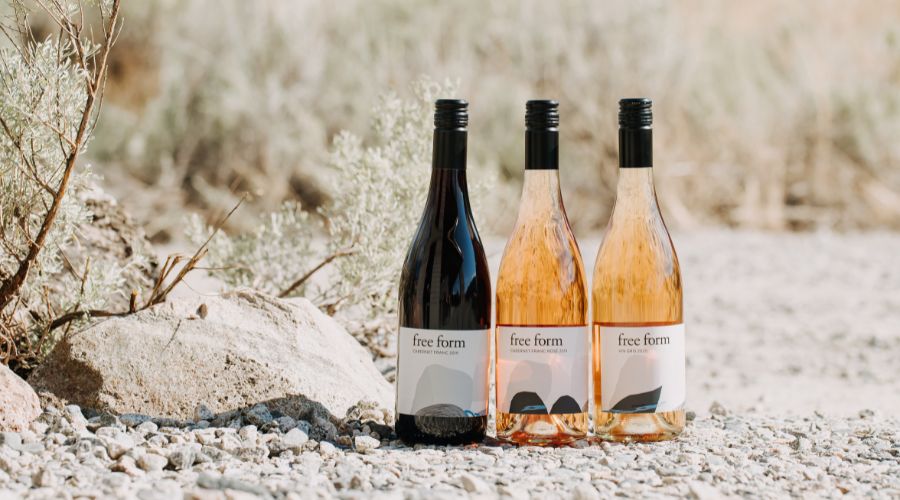
Highlighting the Craftsmanship of Free Form Wines: A Closer Look at Specific Vintages
Free Form wines embody the essence of low-intervention winemaking, offering a pure expression of the Okanagan Valley’s terroir. Below, we explore some standout wines from the Free Form portfolio, each crafted with meticulous care to showcase the unique characteristics of the land and the vintage.
Blanc de Noir 2018
Vineyard: Garnet Valley Ranch, Summerland, Okanagan, British Columbia
Winemaking: The Blanc de Noir 2018 is crafted from Pinot Noir grapes, whole-bunch pressed and naturally fermented in concrete tanks. Aged for 36 months en tirage before disgorging with zero dosage, this wine is a true representation of the high-altitude Garnet Valley Ranch Vineyard. The process emphasizes the structured elegance and old-world intensity of the sparkling wine, making it a benchmark for Okanagan sparkling wines.
Wine Profile: This wine greets the eye with a pale straw color and an exquisite mousse. The aroma bursts with ripe stone fruits, reminiscent of an oven door opening to freshly baked brioche. On the palate, the mousse is exuberant, accompanied by focused acidity and a length that lingers. It’s a sophisticated and celebratory sparkling wine.
Suggested Pairings: The Blanc de Noir 2018 pairs beautifully with fresh oysters, caviar, or enjoyed simply with good friends.
Pinot Gris 2020
Vineyard: Switchback, Summerland, Okanagan, British Columbia
Winemaking: This Pinot Gris is a blend of 50% juice and 50% whole cluster, naturally fermented in amphorae and aged on skins and lees for nine months. The wine is then blended and aged for an additional two months in concrete tanks, resulting in a clean and precise natural wine.
Wine Profile: The 2020 Pinot Gris offers a delicate creamsicle and toffee aromatic profile, thanks to full malolactic conversion. The texture is smooth and the flavors are nuanced, making it a versatile and complex wine.
Suggested Pairings: This wine shines alongside complex sushi dishes or luxurious servings of caviar, complementing the rich flavors with its refined acidity.
Riesling 2020
Vineyard: Garnet Valley Ranch, Summerland, Okanagan, British Columbia
Winemaking: Crafted from organic Riesling grapes, this wine is whole-bunch pressed and fermented in stainless tanks using natural yeast. The winemaking approach allows the natural acidity and fruit flavors to shine.
Wine Profile: The Riesling 2020 is vibrant with aromas of Granny Smith apples and tropical citrus, punctuated by notes of mandarin pith. On the palate, it is delicate and refreshing with a creamsicle texture, balanced by fine Okanagan tension and great length.
Suggested Pairings: This Riesling pairs perfectly with a selection of your favorite cheeses, offering a refreshing counterbalance to rich and creamy flavors.
Cabernet Franc Rosé 2019
Vineyard: Sekhon Family Vineyard, Osoyoos, Okanagan, British Columbia
Winemaking: The Cabernet Franc Rosé 2019 is made from certified organic Cabernet Franc grapes, gently squeezed and naturally fermented in concrete. The wine undergoes full malolactic fermentation and extended lees aging, resulting in a delicate and well-balanced rosé.
Wine Profile: This rosé presents enticing red berry aromatics, leading to a harmonious blend of lush sweet and savory fruit. The acidity is bright and juicy, providing a refreshing framework that makes this wine exceptionally enjoyable.
Suggested Pairings: The Cabernet Franc Rosé is a versatile companion to a wide range of dishes but particularly shines with grilled seafood, summer salads, or as a refreshing aperitif.
Vin Gris 2020
Vineyard: Garnet Valley Ranch, Summerland, Okanagan, British Columbia
Winemaking: The Vin Gris 2020 is crafted from Pinot Noir grapes, whole-bunch pressed and fermented with natural yeasts in small concrete eggs. The wine undergoes full malolactic fermentation and is bottled unfiltered, capturing the freshness and balance of the Pinot Noir variety.
Wine Profile: This wine is glossy and silky, with excellent balance. It highlights the versatility of Pinot Noir in a fresh, white style that is both elegant and approachable.
Suggested Pairings: Serve the Vin Gris slightly chilled with food, such as grilled chicken, roasted vegetables, or light pasta dishes, to fully appreciate its nuanced flavors.
Cabernet Sauvignon 2019
Vineyard: Sekhon Family Vineyard, Osoyoos, Okanagan, British Columbia
Winemaking: The Cabernet Sauvignon 2019 is made from organically certified grapes, with no additives or oak aging to obscure the purity of the fruit. The wine undergoes native fermentation in stainless open tops, with manual punch-downs and 11 months of concrete aging post-basket pressing.
Wine Profile: This Cabernet Sauvignon features bright lifted red fruit on the nose, leading to a mouthwatering and delicate yet brooding palate. The wine’s lush textural notes are framed by supple tannins, fine acidity, and a lengthy finish that speaks to its well-crafted structure.
Suggested Pairings: Pair this wine with rich meat dishes such as braised short ribs, lamb chops, or a well-marbled steak to enhance the wine’s bold flavors.
Cabernet Franc 2019
Vineyard: Sekhon Vineyard, Osoyoos, Okanagan, British Columbia
Winemaking: Made from certified organic Cabernet Franc grapes, this wine was destemmed and fermented in open-top stainless steel fermenters. After spontaneous fermentation with native yeasts and malolactic fermentation, the wine was aged in concrete for 11 months before being naturally settled and bottled.
Wine Profile: The 2019 Cabernet Franc offers a bold and complex profile with dark black plums, blackberries, and a smoky note interwoven with rich mocha and classic herbal aromatics. The palate is juicy with red fruit, excellent structure, and a fresh, mouthwatering finish.
Suggested Pairings: This wine is a great match for hearty dishes like roasted game, grilled portobello mushrooms, or a classic beef stew, where its depth and complexity can be fully appreciated.
Each of these wines from Free Form represents the pinnacle of low-intervention winemaking, allowing the true essence of the Okanagan terroir to shine. Whether enjoyed with food or on their own, these wines offer a journey into the heart of one of Canada’s most unique wine regions.
